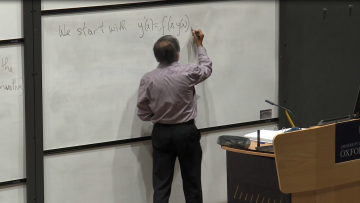12:45
Special functions and complex surfaces in high-energy physics
Abstract
I will elaborate on some recent developments on the theory of special functions which are relevant to the calculation of Feynman integrals in perturbative quantum field theory, highlighting the connections with some recent ideas in pure mathematics.



